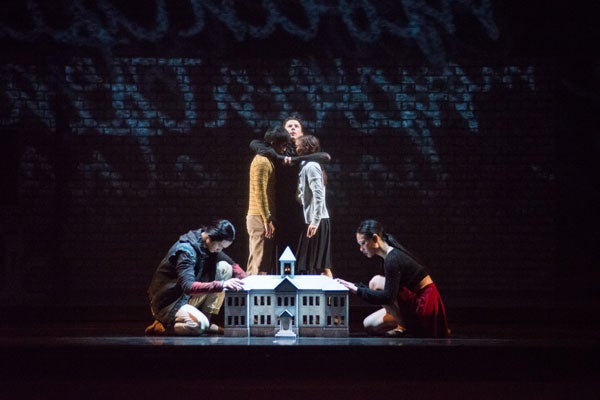
Christos Hatzis on his music for Going Home Star – Truth and Reconciliation
Published: February 3, 2016
Going Home Star – Truth and Reconciliation is a ballet and a shattering history lesson in one.
Based on a story by Joseph Boyden and inspired by the testimonies of survivors at the Truth and Reconciliation Commission, this production of the Royal Winnipeg Ballet follows the lives of two young contemporary First Nations people who explore their own dark and violent history to come to terms with their lives.
Premiered in Winnipeg in 2014, Going Home Star is now in the midst of a Canadian tour. The Toronto performances are at the Sony Centre on Feb. 5 and 6. Christos Hatzis, a professor of composition at the University of Toronto, Faculty of Music discusses his role in telling this story of pain and hope.
How did you get involved with Going Home Star?
I got a cold call from Mark Godden, the choreographer, who was also a principal dancer of the Royal Winnipeg Ballet. They had been thinking about this story for about 10 years, so after the Truth and Reconciliation Commission was formed, they commissioned the piece. This is a native story and ballet is the most western-European of all possible cultural art forms, so Mark wanted the music to tell the story. I had never written a ballet before, but in the 1990s I had done some work with Inuit throat singers. Mark heard it and was taken by that work.
What was your creative process like?
We started in January 2014. We wanted to involve native singers early on, so we brought in Tanya Tagaq (pictured below with Hatziz) and Steve Wood, leader of Northern Cree singers. We got together in the studio in Winnipeg for three days, telling stories, writing and reading texts. Most of the Aboriginal material in the score came from those sessions. There was a lot of vetting with the sources, artists and elders. We made sure we weren’t stepping on any kind of ground we weren’t supposed to tread on. We had lots of help from the ballet on that, so we weren’t alone.”

How long did it take to compose the music?
A ballet score is about a two-and-a-half year process. I thought I had a year, but it was announced that the premiere was to be in October 2014. I didn’t want to cut any corners, so it was a very intensive period. When I got tired of composing I would go to the Truth and Reconciliation Commission’s website, watch the harrowing testimonials of survivors and that would get me back to the music.
What kind of music did you write?
The first 20 minutes is music that you would hear in hair salons and nightclubs: big band music, dubstep, hip-hop, Swan Lake and anything in between. The whole point wasn’t to throw things together, but to find connections that would generate a character who finds meaning in all of these things. The music follows the transformation of this character, Annie, throughout the piece.
What is the significance of the performances in Toronto?
In some ways Torontonians will get a sense of location from the soundtrack. One of my PhD students and I spent nights between midnight and 1:30 a.m. roaming the subway recording trains for the commuting scenes. The big question mark for me was how well this performance would do in Winnipeg, because there is where the cultural battleground really is.
It’s a good time for this to happen. With the new government and with the findings of the Truth and Reconciliation Commission, there is a concerted effort. The piece has been performed in selections in two native festivals so far. One was the Indigenous festival last summer at Harbourfront. It’s incredible, this is a ballet score with white ballerinas, but I still felt that it addressed native identity to native viewers. I was very heartened by that. Because to me it could have been incredibly successful as far as ballet audiences are concerned and still failed if it alienated our native populations.




